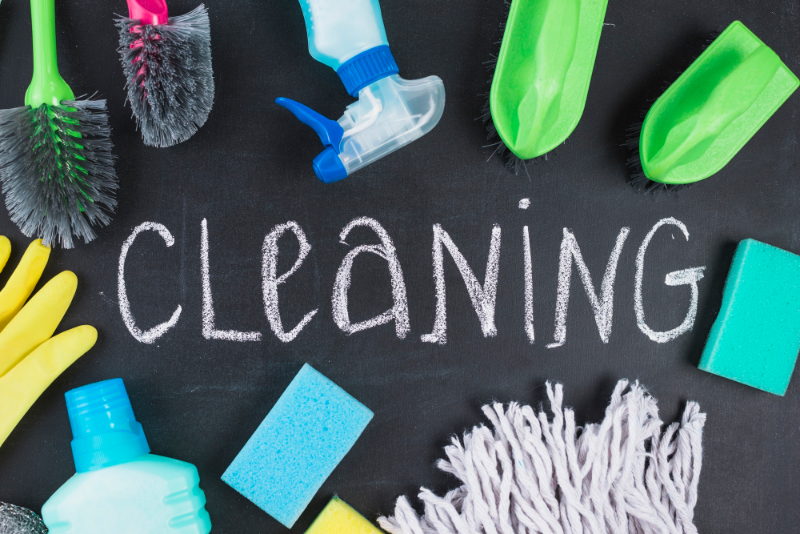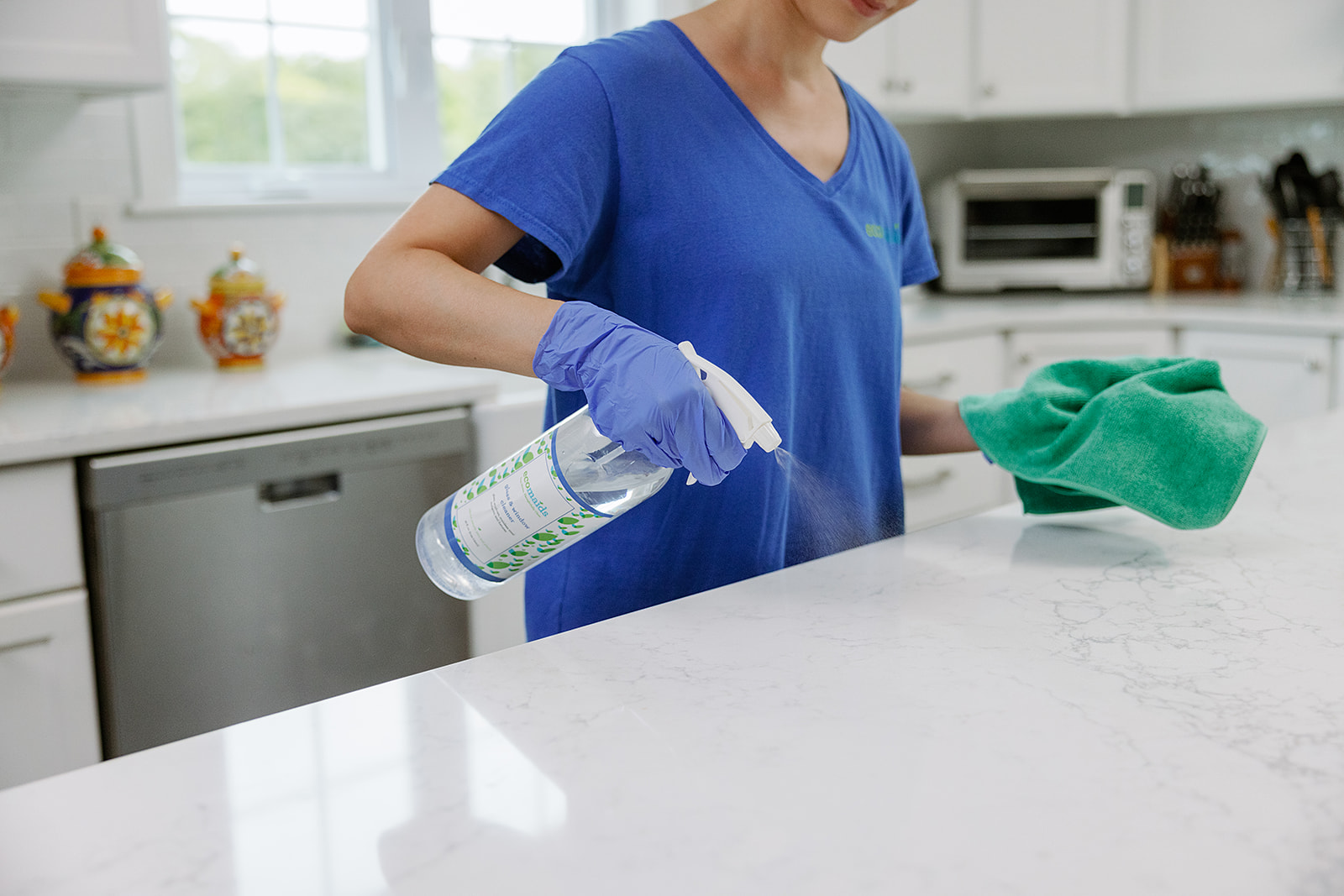Detailed Everyday Cleaning Tips: From Defrosted and Cleaned Every Few Months to Removing Clutter
Detailed Everyday Cleaning Tips: From Defrosted and Cleaned Every Few Months to Removing Clutter
Blog Article
Comprehending the Need for Extensively Sanitizing and Sterilizing Frequently Touched Surface Areas in High-Traffic Areas
In the world of public health and safety, the precise sanitation and sanitization of regularly touched surfaces in high-traffic areas stand as extremely important measures in avoiding the spread of damaging microorganisms. By discovering the various facets of surface area sanitation, from the dangers connected with disregarding cleansing procedures to the efficient methods that can be employed, a clearer understanding emerges of the essential duty these methods play in securing public wellness.
Relevance of Surface Disinfection
Stressing the detailed sanitation of high-traffic surface areas is essential in maintaining a sanitary atmosphere and stopping the spread of hazardous virus. High-touch surface areas such as door handles, light buttons, lift buttons, and kitchen counters function as breeding grounds for bacteria and viruses. Regular sanitation of these surfaces is crucial to decrease the threat of contamination and transmission of ailments.
By carrying out a robust sanitation protocol, organizations and establishments can produce a more secure atmosphere for visitors, employees, and consumers. Proper surface sanitation not just alleviates the spread of infectious illness yet also instills confidence in the tidiness and safety and security of the premises. This proactive technique demonstrates a dedication to wellness and wellness, which is particularly crucial in high-traffic areas where the probability of direct exposure to virus is enhanced.
Furthermore, surface area disinfection plays a critical duty in overall infection control techniques. Combined with hand hygiene practices, wearing masks, and maintaining physical distancing, thorough disinfection of high-touch surfaces creates a detailed protection against the transmission of dangerous microbes. Focusing on surface area sanitation is a necessary part of an all natural strategy to health and wellness in common areas.
Dangers of Overlooking Cleaning Practices
Overlooking thorough sanitation of high-traffic surface areas dramatically enhances the threat of bacterial and viral contamination, posturing a significant hazard to the health and wellness of people often visiting these areas. Failure to implement appropriate cleaning techniques can cause the buildup and spread of damaging microorganisms, including viruses and germs, on frequently touched surface areas such as doorknobs, hand rails, elevator switches, and kitchen counters.

Additionally, ignoring the importance of extensive cleansing not just compromises the health of individuals yet likewise undermines initiatives to keep a hygienic and clean setting. It is vital to identify the relevance of proper sanitation protocols in preventing the spread of infections and guarding public health.
Efficient Disinfection Techniques
To keep ideal cleanliness and lower the threat of contamination on high-traffic surface areas, employing effective disinfection techniques is important. Among the most common and efficient disinfection approaches is utilizing chemical anti-bacterials. These items can differ in strength and structure, with some targeting specific microorganisms like infections or bacteria. It is vital to comply with the supplier's instructions for correct dilution, call time, and ventilation when using chemical disinfectants to guarantee their performance - Clear Out Any Clutter.
One more reliable approach is making use of UV-C light. UV-C light has actually been revealed to be reliable in eliminating a vast variety of bacteria by interrupting their DNA structure, therefore avoiding them from duplicating. Nevertheless, it is necessary to use UV-C light correctly, making certain that the correct strength and direct these details exposure time are related to accomplish the preferred sanitation results.
Furthermore, employing heavy steam cleaning as a sanitation browse around these guys technique can be very reliable, especially on surface areas that are heat-resistant. Heavy steam can penetrate porous surfaces and eliminate bacteria, infections, and other virus successfully. When utilizing vapor cleaning, it is necessary to make sure that the surface gets to the needed temperature level for an adequate quantity of time to guarantee correct sanitation.
Impact on Public Health And Wellness
The maintenance of high requirements of sanitation and disinfection on high-traffic surface areas plays a vital role in securing public health. Frequently touched surface areas in areas with high tramp, such as doorknobs, hand rails, elevator buttons, and bathroom centers, act as breeding premises for hazardous microorganisms. Failing to effectively disinfect these surfaces can cause the rapid spread of transmittable conditions within communities. By executing detailed disinfection procedures, the threat of transmission of infections, bacteria, and other germs can be substantially reduced.
In high-traffic areas like airport terminals, institutions, hospitals, and public transportation systems, the effect of rigorous disinfection steps can not be underrated. Focusing on the sanitization of regularly touched surfaces is an aggressive method to promoting public health and boosting the safety and security of people in common spaces.
Implementing Regular Cleaning Up Protocols
Without delay instituting and sticking to a consistent schedule of cleansing protocols is critical for preserving the cleanliness and safety and security of high-traffic surface areas. Normal cleansing methods are important in protecting against the build-up of bacteria and virus on often touched surfaces, specifically in areas with high foot traffic. By carrying out an organized method to cleansing, organizations can successfully minimize the danger of illness transmission and top article develop a much healthier setting for employees, consumers, and the public.
To develop an effective cleansing routine, it is essential to recognize high-traffic locations that call for frequent focus. These locations might include doorknobs, hand rails, lift switches, toilet centers, and shared tools. Executing a regular cleaning routine that targets these surface areas multiple times a day can dramatically minimize the spread of unsafe bacteria and viruses.
Additionally, using ideal cleaner and anti-bacterials is key to ensuring that surfaces are thoroughly sterilized. Routine training of cleaning up personnel on correct cleaning strategies and the relevance of adherence to the cleansing schedule is also important in preserving a sanitary setting. By focusing on regular cleaning methods, organizations can advertise the health and health of individuals who interact with these high-traffic surfaces.

Conclusion
In verdict, it is critical to focus on comprehensive sanitation and sanitization of regularly touched surfaces in high-traffic locations to stop the spread of damaging pathogens and preserve public wellness. Disregarding appropriate cleaning methods can enhance the danger of contamination and transmission of illness. By executing regular cleansing methods and using efficient disinfection techniques, we can produce a much safer atmosphere for every person (Vacuum Carpets). It is critical to identify the importance of keeping clean surface areas in high-traffic areas to make certain the health of the community.
In the realm of public health and wellness and safety and security, the careful sanitation and sanitization of regularly touched surfaces in high-traffic areas stand as vital steps in avoiding the spread of unsafe pathogens. By checking out the numerous aspects of surface area sanitation, from the threats associated with overlooking cleaning protocols to the efficient techniques that can be utilized, a more clear understanding arises of the crucial duty these techniques play in safeguarding public health.Additionally, employing steam cleaning as a sanitation method can be highly effective, especially on surfaces that are heat-resistant. When using vapor cleaning, it is important to ensure that the surface gets to the required temperature level for a sufficient quantity of time to ensure appropriate sanitation.
In verdict, it is vital to prioritize complete disinfection and sanitization of often touched surfaces in high-traffic areas to prevent the spread of unsafe microorganisms and maintain public wellness.
Report this page